Want to boost your eco credentials, save staff time and help your store stand out? Perhaps you should be encouraging shoppers to serve themselves
Unexpected item in baggage area. It’s a phrase likely to raise the blood pressure of even the calmest of us. But while self-service checkouts may not have yet won the hearts and minds of c-store shoppers, other ‘serve yourself’ areas are proving a big hit, and some retailers even see them as the future of convenience retailing.
“The way we sum it up is that self-service saves people waste, money and packaging,” asserts Ruth Anslow, founder and director at ethical grocery store Hisbe, in Brighton.
At Hisbe, self-serve dispensers are filled with everything from cereals, pasta, rice and lentils, to spices, laundry detergents, household cleaners and even chocolate. Shoppers simply buy a bottle, fill it up and bring it back to refill when they run out.
The store has been gradually adding to its self-service offer since it opened in December 2013, with detergents the latest to be installed in May, and the service has earned the store a loyal following.
“There are some people who are refill mad and come in every day with lots of bottles. Most people who come in realise after a while that it’s cheaper with the self-service dispensers. Customers realise that they can get the same product for 50p less,” says Ruth. “They create a point of interest and customers come here specifically for them.”
Refill stations are helping to add to the in-store theatre at Mehmet Guzel’s Simply Fresh stores in Bethnal Green and Old Oak in London, and in Hatfield Railway Station in Hertfordshire. Mehmet’s self-serve covers wine, laundry and liquid refills, and have been such a success that he is now looking at expanding the range with an olive bar at the deli counter. “With self-service products it’s the novelty value and interaction with the customers that make the products so popular and leads to customer loyalty,” he says.
“People walking by will see the barrels and containers and be attracted in to have a look around the store. It’s a novelty that you don’t see in most convenience stores.”
Data from HIM Research & Consulting shows that boosting the shopper’s experience can be a particularly valuable exercise for c-store owners. Its 2017 Convenience Tracking Programme shows that those shoppers rating the in-store experience as excellent (with a score of 9 or 10 out of 10) visit more frequently (3.9 times per week), pick up more items (2.9 items per week) and are more likely to recommend the store to a friend (average likelihood to recommend 9.6 out of 10).
“Traditionally, expectation for the in-store experience revolved around staff - namely friendliness and helpfulness, driven by the local nature of convenience stores. The modern shopper’s expectation of an enjoyable in-store experience has been buoyed by their experience in other channels and by the proliferation of the super-cs, and this is something the rest of the industry must address,” its report concludes.
Kash Khera, founder and managing director of Simply Fresh, says the chain is a pioneer of self-serve, and its attention is now turning to self-serve in food to go with salad bars and coffee machines, and the latest innovation, fresh orange juice machines.
Kash believes the benefits add up to more than just adding theatre, though; self-serve also speeds up the shopping process. “When you’re dealing with people who haven’t got a lot of time it’s very important to help those customers purchase items quickly. With convenience stores it’s more around speed of service, because customers always want to be served quickly.”
Self-serve might save shoppers time, but does it save retailers time? After all, the dispensers need to be refilled regularly and the area kept clean. Kash believes there are “no downsides” to the service when it comes to food to go, “because with food to go you should be freeing up staff to let customers serve themselves, which should reduce costs”.
However, Ruth at Hisbe points out that the dispensers in her store do require some effort to look after. “Every day the dispensers need to be filled up, which costs staff time. But each product is different so they get cleaned on a rotational basis - every few days for some and every few weeks for others.
“We do also get spillage as well where customers drop some of the contents on the floor, which obviously needs to be cleaned up and thrown away.”
She says they are also careful to put products in the right dispensers. “For example, we changed the rice from large containers to small ones because we found more people wanted a bigger range of rice. The bigger containers are usually used for longer-life products.
“It’s important that we put the best-selling lines in bigger containers so that customers can fill up without the stock running out. It also saves staff from filling up the stations too often.”
Mehmet says the self-serve set-up is straightforward. “The service pretty much runs itself, with staff only having to change the occasional canister,” he asserts.
And what little work is needed is offset by the healthy margins he makes. “For most product refills, the margin is 30% POR. For wines, the margin is between 15% and 18%. We are happy with that because it’s a real loyalty driver.”
Ruth points out that the refill stations in her store “aren’t cheap” to buy in the first place, but that the investment has been worthwhile. “The stations cost about £3,000 on their own and then another £3,000 to put the board or table in to hold them in store. But it adds so much novelty and in-store theatre that you make the money back over time.”
This summer Sunder Sander invested in a self-serve ice cream machine at his Leamington Spa One Stop franchise, and couldn’t be happier with it. “Ice cream machines cost about £1,000, but I did a deal with the suppliers and did a 50:50 share. Having an ice cream machine has been fantastic. I’d been looking for a soft scoop machine that was self-service for some time. This machine has been perfect.”
He says the machine fills the pot within five seconds and tells the customer when the process is finished. It even plays music while the customer is using it.
He can leave the machine running for two weeks, after which time it requires a thorough deep clean and the mixture needs to be emptied out. Not to waste any, though, he sells the ice cream at 50p instead of the usual £1 the day before the deep clean to ensure the machine is empty.
“The machine is a great bit of novelty. It also saves on staff hours. Labour costs are a big, big saving. Customers also want to be in and out of the store very quickly. All you do is take the money and they can help themselves and leave the store. There is even less waste, but the main benefits are the buzz in store and the saving in staff time.”
For Ruth, self-service is the way forward and she is keen for it to become the norm, instead of a novelty. “We definitely want to make it mainstream,” she says. “The next step for us would be to get rid of all the products on shelf that can be bought through the self-service dispensers, but customers aren’t ready for that just yet.”
Amazon go
The future of self-service check out
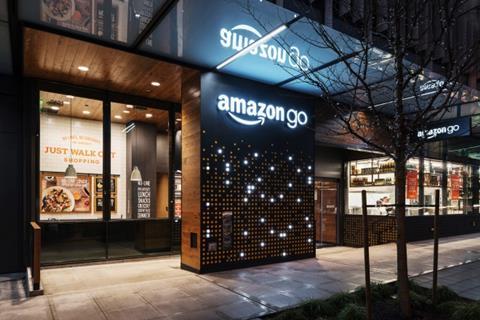
Amazon is taking self-serve to the extreme with its pilot store, Amazon Go, an outlet with no sales staff or checkouts at all. Shoppers with the Go app pick up what they need and then simply leave, with technology tracking which products are taken and charging their Amazon account accordingly.
The 1,800sq ft store in Seattle, which sells grocery essentials, food to go and fresh and chilled items, is at present open only to Amazon staff, but in China a chain of similar self-service stores has already opened to the public.
The BingoBox is a mobile shop pod selling hundreds of items, but with no staff present. Shoppers use a smartphone app to gain entry to the store and pay for their goods at a self-service till.
Facial recognition software checks for unauthorised shoppers, while a sales assistant can be reached by video link if needed.
According to website TechinAsia, BingoBox has plans for 5,000 shop pods across China.
Marketing
Whip up interest in self-serve treats

Adding any new service requires promotion and Sunder Sandher is making sure customers know about his soft-scoop self-serve ice cream machine at his Leamington Spa One Stop franchise. Sunder made a film of himself using the machine and posted it on Facebook, to show shoppers how to use it and to whip up interest in the whippy ice cream.
“I have put a sign outside the store to tell people about the ice cream and I’ve also publicised everything on social media,” he explains.
“People have been taking pictures of each other enjoying the ice cream in store and then posting it on Facebook, which is great publicity. It also creates good communication with the locals in the community.”
The service has resulted in new customers, too. “The other day a lady came in with her grandchild after being told by a man down the street that the store sold ice cream from a machine. My store is not far from the park, about 10 mins walk, and that day the ice cream van hadn’t come. The granddaughter had been crying about it, but when the she knew that she could get her ice cream from my store, she was chuffed.”






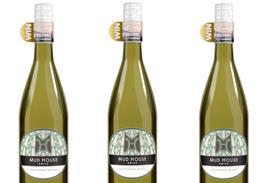










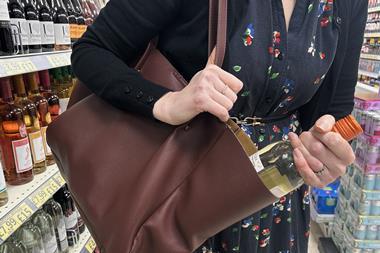
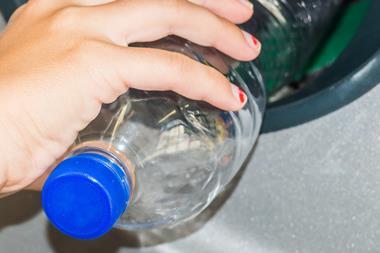
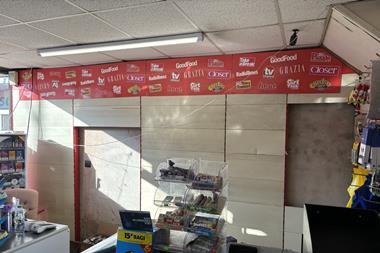

No comments yet